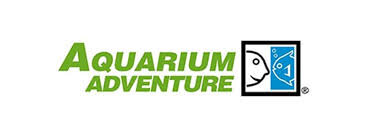Pond Plants
Pond Plants for the Water Garden
With outdoor garden ponds becoming the most popular landscape element in America today, everyone has the ability to create a green space in their own home environment. What makes garden ponds so interesting is the addition of water to the typical garden. Ponds add patterned stonework, running water, fish to watch and feed, and flowering aquatic plants, attracting frogs, toads, birds and butterflies…before you know it, it’s a nature reserve in your backyard!
Planting the pond is the most enjoyable part because there are so many plant choices. For those who love gardening and being creative, deciding on the varieties to be planted in the different pond zones is fun and rewarding. There are four main groups of plants available: oxygenators, floaters, marginal (or bog) and lilies. All four can be used for aesthetic and practical purposes.
Oxygenators
These plants are used primarily for practical purposes, in that they grow rapidly and soak up excess nutrients and thus help with algae control. Plant these in pots and submerse in the bottom of the pond. Most of these are not winter hardy and should be removed from the pond when closing it for the winter.
Examples: Hornwort, Foxtail and Parrot’s Feather.
Floating Plants
These plants, which float on the surface are used for both practical and aesthetic uses. They grow very rapidly and can quickly cover a pond. This fast growth helps them use nutrients and block sunlight, they need to cover about 2/3 of the surface, thus preventing excessive algae growth.
Examples: Water Lettuce, Water Hyacinth, Frogbit, Fairy Moss and Duckweed.
Marginals
Marginals are used mainly for aesthetic purposes, adding to the look of the pond. Generally they prefer to keep their “feet” wet; having their roots submerged 2-6 inches in the water. They should be planted in oversized planters to provide stability against rain and wind, and to allow for uninterrupted growth for a few years. There are two types: tropical and hardy. Tropical do well during warm weather but will die off after the first freeze. Hardy marginal can be considered perennials, dying back in the winter, and re-growing the following spring.
Examples Tropical Marginals: Umbrella Palm, Taro, Canna and Spider Lily
Examples Hardy Marginals: Arrowheads, Iris, Pickerel Rush and Cardinal Flower
Bogs
Bog plants are used mainly for aesthetic purposes too, also adding to the look of the pond. The difference between these and Marginals, is Bog plants prefer moist loving soil outside the pond, but not directly in the water.
Examples: Marsh Gladiolus, Marsh Marigolds, Day lilies and Hosta.
Lilies
Lilies are perhaps the most popular of all the pond plants. They are used primarily for aesthetic purposes, as they put out dozens of lily pads and beautiful flowers that rest on the surface of the water. Like Marginals, there are tropical and hardy versions of lilies and should be cared for the same as mentioned with Marginals.
